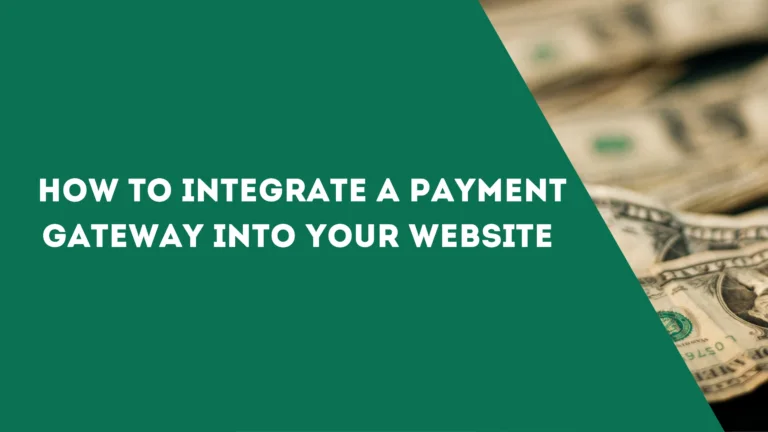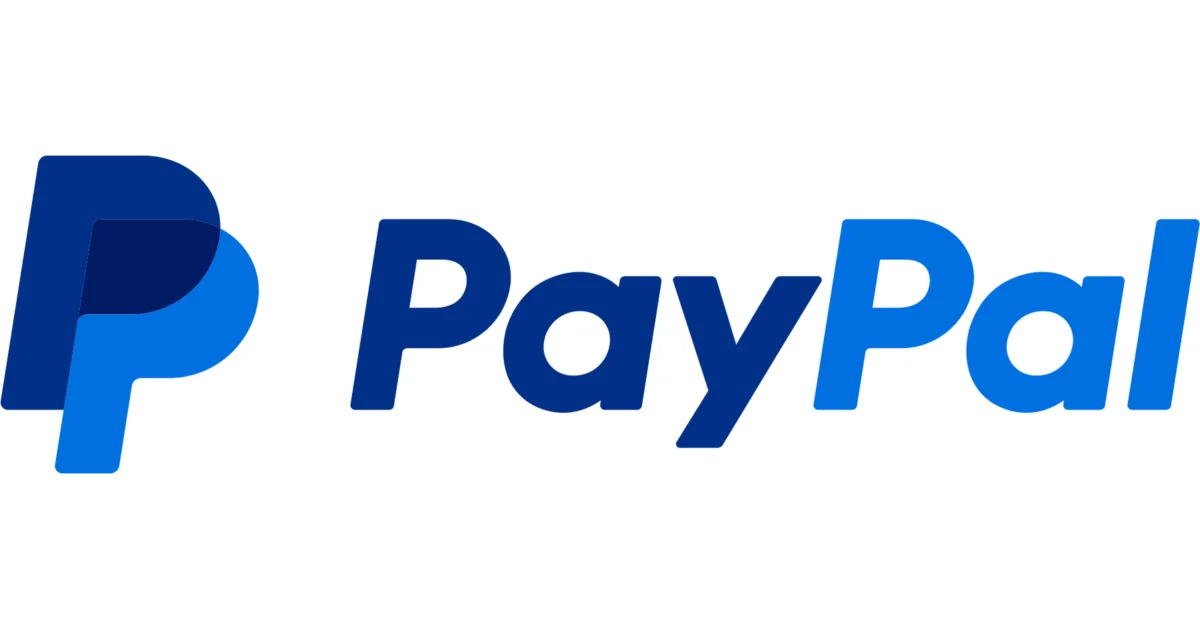How To Integrate Payment Gateway In Website?
In 2023, integrating a payment gateway into your website is a pivotal step towards e-commerce success. This guide provides a comprehensive walkthrough, from selecting the right gateway that aligns with your transaction volume and payment methods, to the final checks before launch. It’s an essential read for any online business ready to streamline their transaction process and elevate the customer checkout experience.

How to integrate a payment gateway into your website
Introduction
In the digital marketplace, a payment gateway is the cornerstone of financial transactions, serving as the intermediary that securely processes payment details between the customer and the online business. Whether you operate an ecommerce website or provide online services, integrating a robust payment gateway solution is pivotal. It not only facilitates a multitude of payment methods, including credit cards and mobile payments, but also ensures transaction security through encryption, safeguarding both merchant accounts and consumer data.
As we launch into the integration process, understanding the nuances between hosted payment gateways and non-hosted payment gateways is essential. This knowledge helps tailor the payment processing experience to customer preferences, while adhering to privacy policies and consent requirements. In this digital voyage, the right payment gateway services can transform the checkout experience, bolstering customer trust and satisfaction through seamless transactions and strong security measures.
Selecting the Right Payment Gateway

Understanding Payment Gateways
Definition and Role in E-commerce
A payment gateway is a merchant service that authorizes and processes payments for online businesses, acting as the digital equivalent of a physical point-of-sale terminal. It is a crucial component in the e-commerce ecosystem, enabling an online store to accept payments through various payment methods such as credit cards, bank transfers, and mobile payments.
How Payment Gateways Work
When a customer makes a purchase, the payment gateway captures the payment information and securely transmits it to the payment processor. The processor then communicates with the customer’s credit card company or bank to confirm the transaction details. Upon transaction approval, the payment gateway sends a confirmation to the merchant’s server, and the payment transaction is processed.
Evaluating Your Business Needs
Transaction Volume, Security, and Customer Preferences
Selecting the right payment method involves analyzing your business’s transaction volume, required security measures, and your customers’ preferred payment methods. Whether your customers favor PayPal payments, debit cards, or direct bank transfers, your chosen gateway should support these options.
Hosted vs. Non-Hosted Payment Gateways
Businesses must choose between hosted payment gateways, which redirect customers to the gateway’s platform to complete a transaction, and non-hosted payment gateways or integrated payment gateways, which allow customers to complete the transaction within the merchant’s checkout page, offering a more seamless experience.
Comparing Payment Gateway Providers
Popular Providers and Their Features
Various payment gateways offer different features, from PayPal’s express checkout to custom payment gateway solutions. Providers differ in terms of transaction fees, monthly fees, safeguarding protocols like SSL certificates, and the ability to handle online transactions with fraud protection.
Key Considerations
Payment Methods Supported
Your chosen payment gateway should support a wide range of payment methods, including credit card details, electronic payments, and recurring payments, to cater to the diverse preferences of your customers.
Fees and Service Charges
Understanding the transaction fees and setup fees associated with your payment method is essential to manage costs effectively. Look for hidden fees and consider the payment gateway’s overall cost against the features and payment services provided.
Compliance and Security Measures
Ensure that you integrate a payment gateway that complies with industry standards like PCI DSS and offers robust safeguarding protocols to protect sensitive payment details. The gateway should employ encryption methods, such as an SSL connection, to maintain transaction security and safeguard billing address and other personal information.
By carefully considering these factors, businesses can select a payment method that not only meets their operational needs but also provides the security and convenience that customers expect. With the right payment solution, an ecommerce website can offer a smooth payment process, build customer trust, and ultimately help propel the business’s growth and development.
Establishing a Merchant Account

The Role of Merchant Accounts
A merchant account is a specialized bank account that enables businesses to accept and process electronic payment methods such as credit cards and online payments. Unlike a standard business bank account, which simply holds funds, a merchant account works in tandem with a payment method to authorize and settle payment transactions, acting as an intermediary between the payment processor and the business.
Setting Up a Merchant Account
To integrate a payment gateway into your online business, establishing a merchant account is a prerequisite. The process typically involves:
Selecting a payment service provider that aligns with your business’s payment options and payment processing needs.
Submitting an application, which may require details about your business model, projected sales volumes, and the types of payment methods you intend to accept, such as debit cards or direct payments.
Documentation and Verification Process
The verification process for a merchant account can vary but generally includes:
Providing business documentation, such as incorporation certificates, tax IDs, and financial statements.
Undergoing a credit check or providing a personal guarantee, especially for businesses without an established financial history.
Implementing a payment portal on your checkout page that complies with the payment gateway’s requirements, including payment gateway encryption to secure payment information.
Once approved, you’ll receive the necessary credentials to configure your payment method and start processing transactions. It’s important to note that some kind of transaction fee or monthly fee are typically associated with merchant accounts, and these should be factored into your business’s financial planning. Additionally, maintaining PCI compliance is crucial, which often involves setting up cookies and SSL certificates to ensure secure data handling.
For more information on this topic, check out another of our articles: How to Set up a PayPal Merchant Account
Acquiring API Keys

The Role of API Keys in Integration
API keys are essential credentials used to authenticate and authorize interactions between your website and the payment method. They play a critical role in the payment processing chain, allowing your payment portal to securely communicate with the payment processor. Without API keys, your system cannot initiate payment requests or receive transaction status updates, making them a cornerstone of integrating a payment gateway into your website.
Obtaining API Keys
Acquiring API keys is a straightforward process:
Register with your chosen payment gateway provider.
Navigate to the API section in your account dashboard.
Follow the provider’s process to generate new API keys, which typically involves confirming your identity and agreeing to the terms of use.
Best Practices for Handling API Keys
Once you have your API keys, it’s crucial to handle them with care to prevent unauthorized access to payment information. Here are some best practices:
Store API keys securely, away from your web host provider’s public directories.
Use environment variables to keep keys out of your codebase.
Regularly rotate API keys to minimize the risk of misuse.
Apply strict access controls to ensure only authorized personnel can view or modify the keys.
If your payment solution supports it, use separate keys for different environments (e.g., development, testing, production) to limit the scope of each key.
By following these guidelines, you can help safeguard the payment gateway’s integrity and the security of the payment transactions it processes. This is especially important when dealing with sensitive payment methods like credit card details and bank transfers, ensuring that your payment method works effectively and securely.
Integrating the Payment Gateway

Overview of Technical Aspects
Integrating a payment gateway into a website is a technical process that involves several key steps. It requires setting up a secure environment where payment information can be exchanged safely between the payment processor and the customer. The payment method acts as the mediator, ensuring that payment requests are authenticated and transactions processed efficiently.
Step-by-Step Integration Guide
The integration process typically involves the following steps:
Secure Your Website: Ensure that your website has a valid SSL certificate to establish a secure connection. This is crucial for encrypting all payment gateway communications.
Set Up the Environment: Create a development environment on your web host provider to test the payment method without affecting your live site.
Install the Gateway: Depending on whether you are using a hosted payment gateway or an integrated payment gateway, you will either redirect customers to the gateway’s platform or embed the payment process on your own payment portal.
Configure API Keys: Insert the API keys provided by your payment gateway into the website’s backend to authenticate communication with the payment processors.
Add Payment Methods: Configure the gateway to accept multiple payment methods that your business plans to offer, such as credit cards, PayPal express checkout, or direct bank transfers.
Customize the Checkout Experience: Tailor the checkout page to align with your brand and to provide a seamless user experience. This includes input fields for payment details and billing information.
Test the Integration: Conduct thorough testing to ensure that the payment gateway works correctly, handling payment requests and communicating with the payment processor as expected.
Go Live: After testing, move the integration to your live environment, enabling customers to start making purchases.
Scrile’s Role in Simplifying Integration
While the integration process can be complex, companies like Scrile can significantly simplify it for businesses. With extensive experience in software development and payment solutions, Scrile can help businesses navigate the technical challenges of integrating a payment gateway. Our expertise ensures that the payment method is not only integrated efficiently but also optimized for the business’s specific needs, allowing for a range of payment methods and ensuring that the payment gateway encrypts and handles data correctly.
By following these steps and possibly collaborating with a seasoned development partner, businesses can successfully integrate a payment gateway into their website, paving the way for secure and efficient online transactions.
Scrile’s Unique Payment Solutions

Comprehensive Payment Gateway Integration
Scrile stands out with over two decades of experience in software development, offering comprehensive payment gateway integration services. Our full-cycle IT partnership means we’re equipped to handle every aspect of payment solution development, from initial concept to final launch. Our team of experts specializes in crafting user-friendly experiences. We make sure that the integrated payment gateways are not only functional but also intuitive for end-users.
Scrile’s Experience with Billing Services
At Scrile, we understand that a robust billing service is the backbone of any online transaction. Our extensive experience encompasses a variety of billing systems, ensuring that we can cater to a wide range of payment preferences and enhance the financial operations of your online business.
Tailored Billing Solutions
Our team has worked with leading billing services such as Stripe, which is renowned for its ease of integration and user-friendly interface. We’ve also implemented CCBILL and NetBilling, which are preferred for their strong fraud protection and flexible payment options.
For businesses looking to incorporate cryptocurrency transactions, our work with Cryptocom has enabled us to provide cutting-edge payment solutions. Additionally, our expertise extends to region-specific systems like Ali Japan and Plix&Baleto, ensuring localized payment processing that caters to specific market needs.
Seamless PayPal Integration

Recognizing the widespread use of PayPal, we’ve seamlessly integrated its services to offer a familiar and trusted payment method to end-users. Our approach ensures that the billing service integration is not only efficient but also aligns with the user experience and business model of our clients.
By leveraging our comprehensive knowledge of these diverse billing systems, we provide a payment infrastructure that is secure, reliable, and tailored to the unique demands of your online platform.
Why Choose Scrile
Choosing Scrile comes with a host of benefits:
Expertise Across the Board: Whether it’s a hosted payment gateway or a non-hosted payment gateway, Scrile’s team has the know-how to deliver a tailored payment gateway work solution that aligns with your business model.
Customized Solutions: Scrile understands that one size does not fit all. We offer customized payment integration that resonates with the specific needs of your online business, ensuring you can add payment methods and features as your business grows.
Transparent Costs: With Scrile, you’re looking at a clear structure of costs with no hidden transaction fees. We help you understand the financial aspect of integrating a payment gateway, including any monthly fees that may apply.
End-to-End Support: From the initial payment request to the final stages of integration, Scrile provides end-to-end support. Our client-centric approach ensures that your payment solution is up and running smoothly, with ongoing assistance post-launch.
Future-Proofing Your Business: In the fast-evolving digital payment landscape, Scrile ensures that your payment solution remains cutting-edge. We stay ahead of industry trends to provide a payment solution that not only meets current standards but is also ready for future developments.
By partnering with Scrile, businesses can leverage their extensive experience and dedication to quality, ensuring that their payment method integration is handled professionally and efficiently. This collaboration is designed to help businesses focus on their core operations while Scrile takes care of the technical complexities of online payment systems.
Testing the Payment Gateway

Ensuring a Smooth Transactional Experience
Testing is a pivotal step in the payment gateway integration process. It’s essential to verify that every payment method functions correctly and that the payment gateway embedded into your website can handle transactions as expected. This phase ensures that the online payment operates seamlessly, providing confidence before the system goes live.
Testing Procedures
Conducting tests in a sandbox environment is a standard practice among payment service providers. This simulated platform allows for safe, not-real-money transactions to verify the payment method work flow. During this phase, businesses can:
Handle test transactions to ensure the payment gateway accurately processes and records each step.
Confirm that the payment gateway correctly determines transaction approval or denial based on the provided data.
Check the communication between the payment gateway and the merchant’s web server, ensuring the payment processor sends the right responses.
By meticulously testing each scenario, businesses can trust that the integrated payment gateway will perform reliably, providing a secure and efficient transaction process for their customers.
Going Live with Your Payment Gateway

Final Checks Before Launch
Prior to launch, a comprehensive review is crucial to ensure that the hosted payment gateway and all associated payment methods are fully operational. This involves:
Verifying that the payment gateway embedded in your website can handle live transactions smoothly.
Double-checking that the payment gateway accurately captures and encrypts payment details.
Confirming that the gateway effectively communicates with the payment processors for real-time transaction processing.
Monitoring and Maintenance
Once the payment gateway is live, ongoing vigilance is key. This includes:
Monitoring transactions to ensure each payment method is functioning correctly and that the gateway consistently takes the necessary steps for successful processing.
Maintaining a watchful eye for any discrepancies or issues, ready to resolve them promptly to avoid service disruption.
Regularly updating systems to keep up with the latest payment method advancements and security protocols.
By staying attentive and responsive, businesses can safeguard the integrity of their payment gateway and maintain a trustworthy payment portal for their customers.
Conclusion

The journey to integrate a payment gateway into your website is intricate, from selecting the right payment method to ensuring each transaction is processed effectively. It’s a pathway that determines the efficiency and reliability of online transactions.
Partnering for Success
Choosing a knowledgeable partner is pivotal. Scrile’s expertise in crafting tailored payment solutions ensures a smooth integration process. It enables businesses to focus on growth while the technical intricacies are expertly managed. With Scrile, the gateway becomes more than a tool; it’s a stepping stone to success.
FAQ
How do I add a payment gateway to my website?
To add a payment gateway to your site, select a payment method that aligns with your business needs. Register with a gateway provider, obtain the necessary API keys, and follow their integration guide to embed the gateway into your website.
How do I integrate a payment gateway into my application?
Integrating a payment gateway into an application involves choosing a provider that supports your desired payment methods. Use the provider’s SDK or API for your application’s backend, ensuring you follow their documentation for a secure integration.
How do I integrate a visa payment to my website?
To integrate Visa as a payment method, sign up with a payment service that processes Visa transactions. Implement the provided API or plugin from the service to your website’s checkout system, allowing for the payment gateway to take care of the transaction details.
Are payment gateways free?
Most payment gateways are not free. They typically charge per-transaction fees or monthly rates. Some may offer free setup or lack monthly fees, but they will usually take a percentage from each transaction processed. Always review the pricing structure before selecting a gateway provider.
Read also
Legal Considerations for Content Platforms
Learn about the key legal considerations for running content platforms, including compliance, intellectual property, and user privacy.
Mastercard Policy for Adult Content Sellers
Discover the latest Mastercard policies affecting adult content sellers, including requirements and compliance measures.
Is It Legal to Use OnlyFans?
Find out about the legality of using OnlyFans, including regional regulations and best practices to stay compliant.
How to Set Up a PayPal Merchant Account: A Step-by-Step Guide
Learn how to set up a PayPal merchant account with this step-by-step guide, enabling you to accept payments securely and efficiently.
Is Camming Illegal? Understanding the Laws
Explore the legality of camming, including legal considerations and regulations that affect webcam modeling.